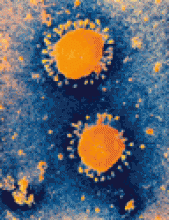- © 2004 Canadian Medical Association or its licensors
Richard Horton, editor of The Lancet, recently described the underrepresentation of poorer countries both on the editorial boards and in the pages of medical journals as a systematic bias against the diseases of poverty.1 One reason for this neglect is that what is true of human nature is true of medical journals and their editors: it is natural to be concerned primarily with one's own affairs. Western medical journals, which often have one eye on the world and the other on their impact factor,2 tend to focus on the sharp point of health progress most familiar to them. However, people do have higher expectations of institutions that are designed to transcend the limitations of individual attention. Arguably, medical journals ought to count themselves among such “institutions.”
One of the commonest questions asked at the weekly editorial meetings at CMAJ is “Is this new?” Rarely do the important ripostes “To whom?” or “To how many?” receive proper consideration. With increased Internet presence throughout the world and improvements in access to scientific literature, the answers to all of these questions are changing. The annual meeting of the Council of Science Editors in May 2003 focused on the theme of “interacting with the digital environment” in scientific publishing. It was no coincidence that there were several sessions on the social responsibility of journal editors, and on movements to improve electronic access to information in low-income countries. Social responsibility notwithstanding, if the world's leading general medical journals have any claim to global legitimacy, that claim rests on their ability to reflect the health of humans everywhere on the planet. Alas, despite their considerable resources, most medical journals have done a distressingly poor job of capturing the world's most important health issues3 and are far from being truly international.
Convincing arguments for greater attention to the oft-cited 10/90 gap — i.e., the fact that only 10% of health research addresses the problems of 90% of the world's population4 — can be made on several levels. Political, moral and economic reasons are familiar to nearly everyone who has taken pause to consider them. From a health perspective, we have known for several years that whatever is contained in the gap between rich and poor makes people sick.5 Proponents of global equity often remark that with a small increase in foreign aid spending, bringing it closer to the agreed target of 0.7% of the gross national product of wealthy countries, significant progress might be made toward addressing disparity in all parts of the world. This target was first proposed in 1969 by the Pearson Commission (led by the former Canadian prime minister). Only 5 countries — Denmark, Luxembourg, the Netherlands, Norway and Sweden — have succeeded in reaching it.6
It has been suggested in several forums1,7 that medical journals should make a similar contribution of their resources (some argue for as much as 15%) to help fill this gap. CMAJ does not receive enough international submissions to devote 15% of its research pages to the diseases of poverty, but we can begin modestly. A few years ago, we made a conscious effort to include global health in our news section, and we will continue to cultivate this emphasis in Synopsis.8 We are also beginning to actively solicit clinical reviews on neglected diseases and to ask for commentaries on topics of international importance. We are expanding our editorial board to include members who can inform our discussions on how CMAJ is responding to important global issues. Certainly, our continued open-access presence on the Web has led us to hear from more international readers and contributors than ever before. We hope that, with time, we will receive and be able to publish more research articles that represent more accurately the interests of our increasingly international readership. While we remain Canada's general medical journal, we intend to train our gaze outward.
That being said, we must acknowledge that, although information flow is an important factor in improving health, it is not a tangible resource like food, shelter or medicine. We hope to provide useful information and insights about international health issues in our pages, but it is clear that more than mere words will be needed to make meaningful progress against global disparities in prosperity and health. The true value, like most things in medicine, will be found in their application.
Footnotes
-
Competing interests: None declared.











